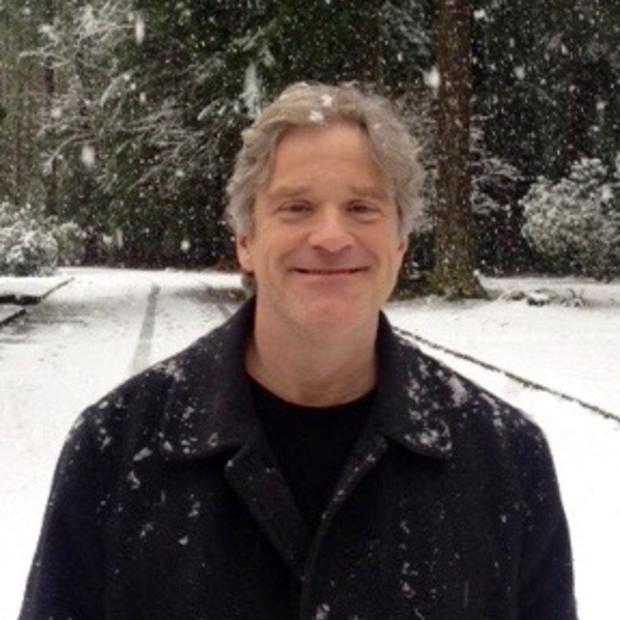The recent dedication of August Werner's re-pedestaled Leif Erikson statue at Shilshole Bay Marina in Ballard was sweetly timed, falling as it did on the eve of an ill-considered federal holiday. (Acknowledging the latter only inflates the myth, but his/its initials are C.C.) Epoch-namers are a cruel lot: Students absorb pre-Columbian history rather than pre-Eriksonian or even "pre-genocidal" history.
There's no reason, of course, that we can't amend that error right now: Leif Erikson, as all good children know, landed in North America half a millennium before Christopher Columbus. Like a responsible Scout – and contrary to his notorious counterpart – Leif left his camp the way he found it.
The Erikson statue was originally dedicated in 1962 as a kind of heritage counterweight to the Bubbleator, the IBM Selectric typewriter, and other rocket-age artifacts of the Century 21 Exposition. Unlike the Selectrics and the Bubbleator, however, Leif continues to thrive.
The new plaza, brilliantly designed by a Seattle artist, Jay Haavik, reflects the vision and fundraising prowess of the Leif Erikson International Foundation. (Yes, the acronym is LEIF.)
Weathering Viking-appropriate gloom the day of the dedication, the grandees of the Northwest's Scandinavian-American community downed champagne and listened to Hugo's Accordion Band and the Norwegian Ladies Chorus of Seattle. Outside a small-carnival-sized tent, the stoic and genealogically obsessed hunched around 13 rune stones patterned like a ship. Each features the names of Scandinavian immigrants (including my grandparents), a mini-Stonehenge hemming in Leif.
This handsome effort will, I hope, begin to lift the veil on the Great Unspoken, the mystery of the Norwegian Diaspora.
Like most Americans, I have pals whose shackled ancestors were hauled to the New World on slave ships, pals whose great-great-great grandparents escaped the Irish potato famine, friends whose families escaped pogroms, wars, pestilence.
So it rings false when I confess that my grandparents "escaped" from Norway, the country that currently ranks first on the United Nations human-development index. Edenic, peaceful, prosperous Norway. It's much easier to concentrate on my mother's Scotch-Irish clan, most of whom were scofflaws fleeing the long arm of the Sovereign.
Curiously, during the 19th and early 20th centuries, Norway hemorrhaged a third of its population, with nearly a million immigrating to the U.S. Washington ranks fourth after Minnesota, Wisconsin, and California in the number of Norwegian-Americans.
These new citizens were purportedly motivated by a spirit of adventure as well as a lack of arable land. Why, then, do the black-and-white portraits of my grandparents telegraph a life-is-short, hemorrhoidal despair? Were adventurous Scandinavians simply unable to express themselves physically? The short answer is yes. Think of an Ingmar Bergman film or look at any Lutheran to confirm.
It still suggests a mystery, especially since Norwegians gravitated to a climate and landscape that mimicked the Old Country. I mean, why leave?
We know that Norwegian-Americans had a wonderfully disruptive impact on the Northwest's social and political culture. They transplanted a taste for trade unionism and fair play and filled the ranks of the ill-fated Industrial Workers of the World (IWW). Advancing social justice and health care balanced a weakness for alcoholism, unipolar depression, and inedible delicacies like lutefisk.
Applying the description "wonderfully disruptive" to the nebula of immigration might inflame the occasional Know Nothing or Lou Dobbs's nativist. It also happily underlines their ignorance. Immigration has always been a shifting stream, that Heraclitus notion of never stepping into the same river twice. In the coming decades, we could witness LIEF analogues with statues of Pushkin in Mountlake Terrace, Wash., or of Santa Ana in Yakima, or of Mahatma Gandhi in Boise.
It's true that for the P.C. and the hyper-sensitized, a statue of a helmeted, jut-jawed Viking is yet another symbol of the patriarchy. But give us this, please: As locals are wont to say, Leif Erikson just may be the last Scandinavian in Ballard.


